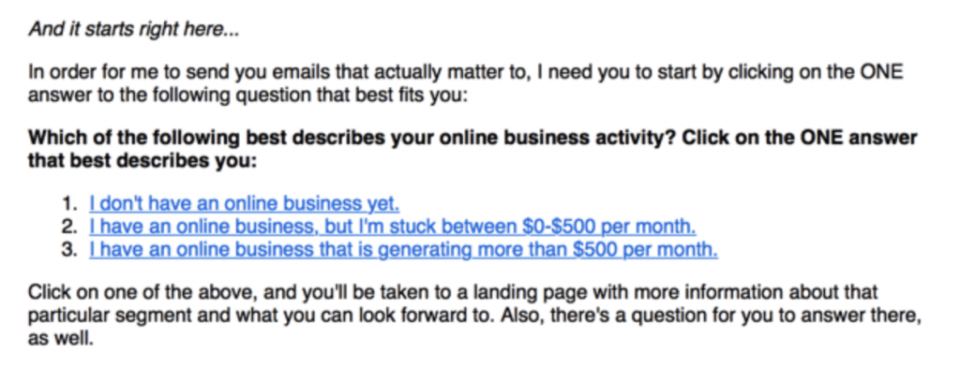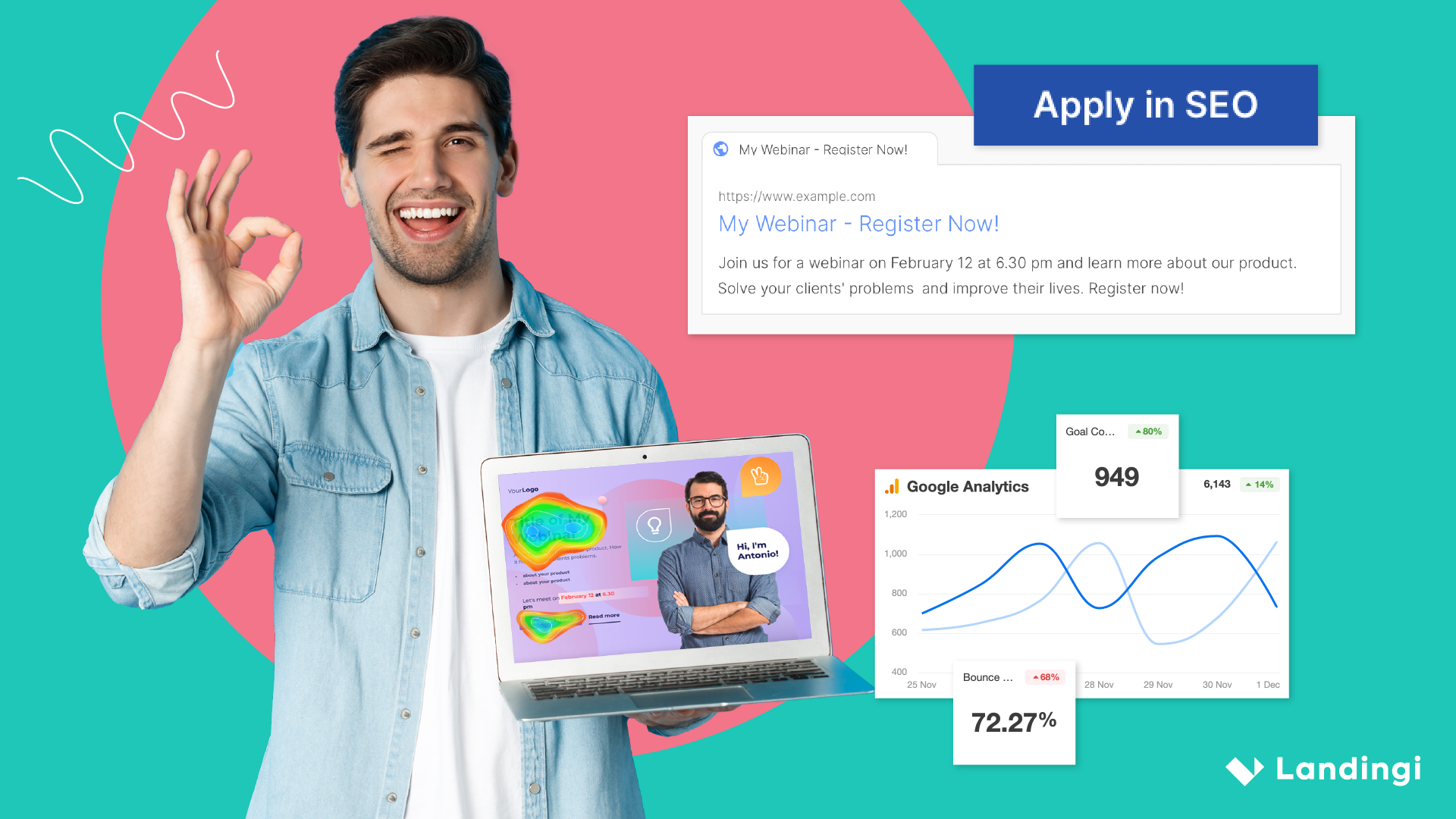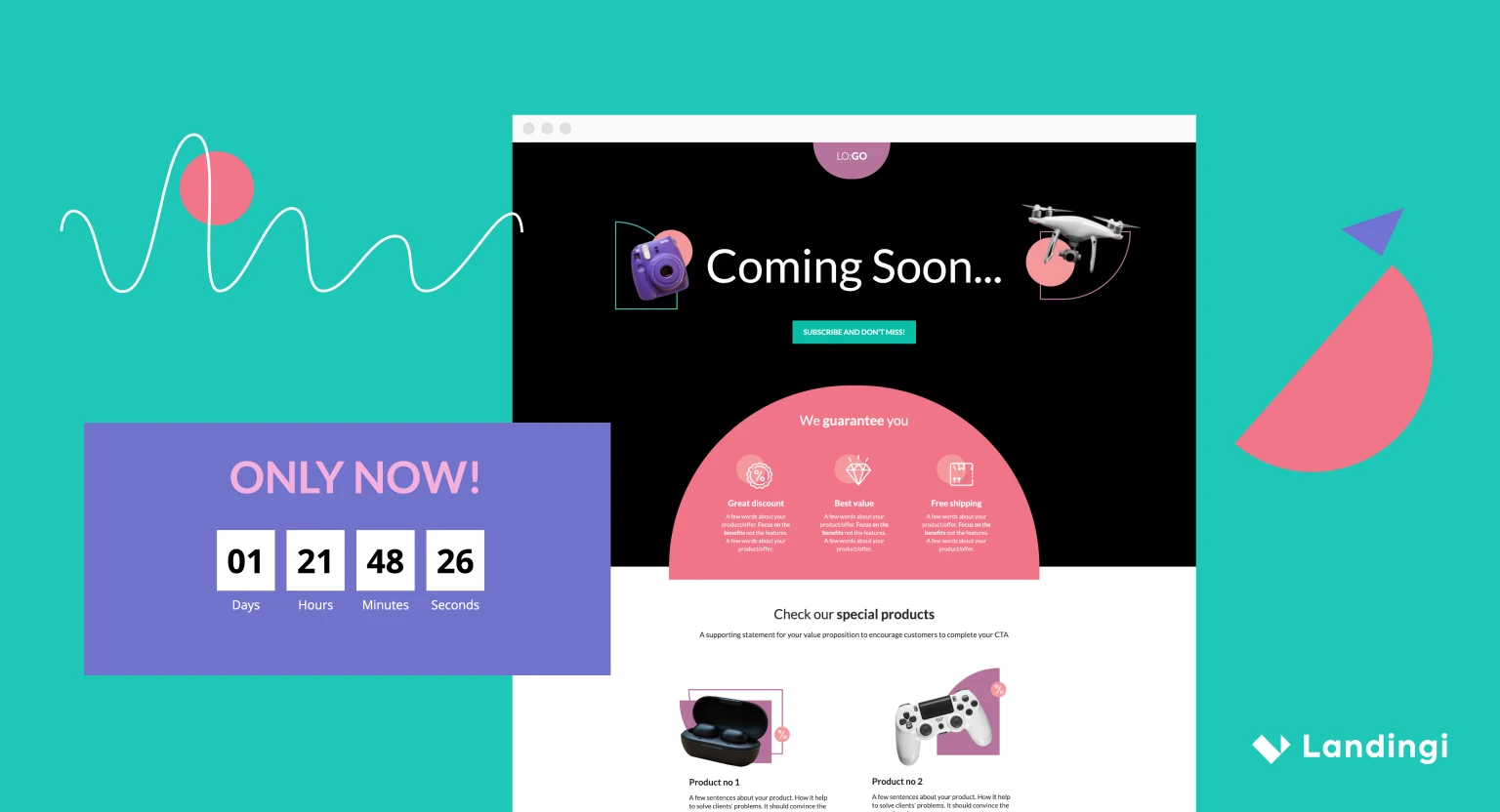People unsubscribing from your list is a common phenomenon in email marketing, and unless you hide away from your subscribers and never send them anything, you’re going to experience it with almost each email broadcast.
Although unsubscriptions are improbable to vanish completely (you’ll see why), you can reduce them if you know the top reasons that cause them. You’re going to read about three of these reasons.
Make your sections smartable and let go of mundane manual tasks with Smart Sections! An easy way to manage bulk changes.
1. Unconsented subscriptions
One of the most ridiculous ways to grow an email list is just scraping emails from different sources (lists for sale, LinkedIn connections, contact forms, etc.) and adding them to your list. Although this method might work for cold emailing, it’s definitely a failed attempt at building a loyal and profitable email list.
The obvious thing people do when they receive an unsolicited newsletter is unsubscribing — if not reporting the email as spam which would affect your deliverability over time (not to mention its negative effect on your customer satisfaction).
What to do instead of unconsented subscriptions?
First of all, you shouldn’t mourn over the loss of these contacts. Quite the contrary, be happy for not having to pay a ridiculous amount of money to send emails to people who don’t care about you.
Second, you need to make sure people are aware that they’re signing up to your lists and what they’re signing up for. This is easy:
- Communicate your message clearly. Don’t use clickbaits to encourage subscriptions.
- Don’t offer irrelevant lead magnets to lure people in.
- Send a welcome email and explain what your subscribers should expect from your emails.
Welcome emails are a great place for addressing your subscribers’ main concerns and building trust with them. Have a good understanding of your potential subscribers’ fears and figure out how you can elevate them to an ideal state.
Building trust with your subscribers is also aligned with addressing their concerns. If they are concerned with the validity of your claims, make sure to send them some case studies and testimonials. If they care a lot about a responsive support team, make sure to introduce your support team and offer some ways to keep in touch. This step gains a high level of importance especially when you are selling things online.

2. Irrelevant content
Don’t mistake irrelevant content with promotional content. You can promote your products or services directly and shamelessly in a good newsletter as long as your content is relevant and interesting to your subscribers (after all, what’s the point of having a list if you can’t promote your products through it). But the moment you divert from their interests, you’ll get the cold shoulder from them.
How to make sure you’re not diverting from your subscribers’ interests?
For one thing, make sure to have separate lists for different topics, or segment your list accordingly. Assuming that you have different products and that you need to market each one of them to a different group of people, it’s a great idea to have a separate list for each product, or at least segment your list to make sure you appeal to all of your subscribers.
This is the email Pat Flynn sent to his subscribers to segment them according to their preferences:

Another content-related principle you should never forget about email marketing is what the great email copywriter, Ben Settle, refers to as infotainment: giving your audience a “great-tasting hot dog” but “nourishes them like broccoli”. The idea is not new in the world of marketing and advertising but is what most commercial emails fall short of in practice — they are either informative but tasteless or amusing but pointless.
Here are some elements that would make your emails infotaining, that is both amusing and informative (about your product):
1. Prioritizing your subscribers’ interests
Nothing catches our attention more than when people talk about us or what matters to us. It is well-known that a good marketing copy is what captures its audience’s interests the most. Spend time to get to know your audience and use their interests in your emails. Survey tools such as SurveyAnyPlace or a customer feedback software such as Osifeedback are a great help here.
2. Retaining a unique voice and perspective in your emails
Don’t be a copycat — spend some time to discover a unique approach to the topics you write about. Differentiate yourself by using lesser-explored content formats in your emails. Videos have a great potential for increasing engagement. Use a free video marketing platform such as Biteable to make engaging marketing videos.

3.Being a good storyteller
We love stories. Our minds are hard-wired to make sense of the patterns in narratives and learn from the ups and downs in them. We are curious to know the fate of the people in the stories. A well-structured story captures our attention, presents some people we identify with (or antagonize), and proposes a lesson for learning (i.e. your marketing message).
If this seems to be a lot of work for you, consider getting help from a full stack marketer or a top digital marketing agency.
3. Disrespect for people’s intelligence
One way to easily lose hundreds of subscribers is being disrespectful of people’s intelligence. Claiming anything ridiculous, making up facts, or overpromising will do nothing but risk your entire reputation.
Using clickbait subject lines is a common way marketers use to get their emails read. You might get a few more opens each time you use clickbaits but that comes with the price of losing your subscribers’ trust in you.
I personally get so frustrated when I see these emails in my inbox. Send me a few clickbait emails and I’ll doubt whatever claims you make — anytime, anywhere.
Here are a few examples from my inbox:
- “Want my website?” (trying to sell his website’s clumsy theme)
- “I told you not to do this” (I had no previous communication with them)
- “Your subscription is expiring” (What subscription?)
The latest revolutionary technique of these people is using “Re:” in their subject lines without having started a conversation with me.
- “Re: your invite”
- “[last chance] Re: your offer”
- “Re: Join . . . in London on October 19th – save your spot now!”
If you’re wondering what makes a clickbait title, here are some cases:
- Deceptive about who the email is from: “Did I leave my jacket at your place?” seems to be from a friend, but it’s not.
- Deceptive about previous email exchanges: the blatant “Re:” type
- Deceptive about urgency of a message: “Urgent — Update your information.” You click on it just to find it’s a promotional email.
- Deceptive about action taken by the subscriber: “Your Reservation Confirmation,” “About your order,” “Thanks for your order!”
As Fluid UI explains in its guide on UX for conversion, “conversion isn’t about making someone do something, it’s about providing an environment that makes doing that thing irresistible.” Trying to fool people into opening your emails or clicking is actually one way to make sure you’re not providing a conversion-boosting environment but on the contrary hurting your online brand.
Should you worry about unsubscriptions?
Unsubscriptions are inevitable because wrong people always find a way to your lists (be it for downloading a lead magnet or misunderstanding your message). But should you worry about them?
Yes and no.
Yes, if you’re sliding away from your original values and goals and breaking the promises you made to your subscribers.
No, if you’ve attracted the wrong subscribers in the first place.






